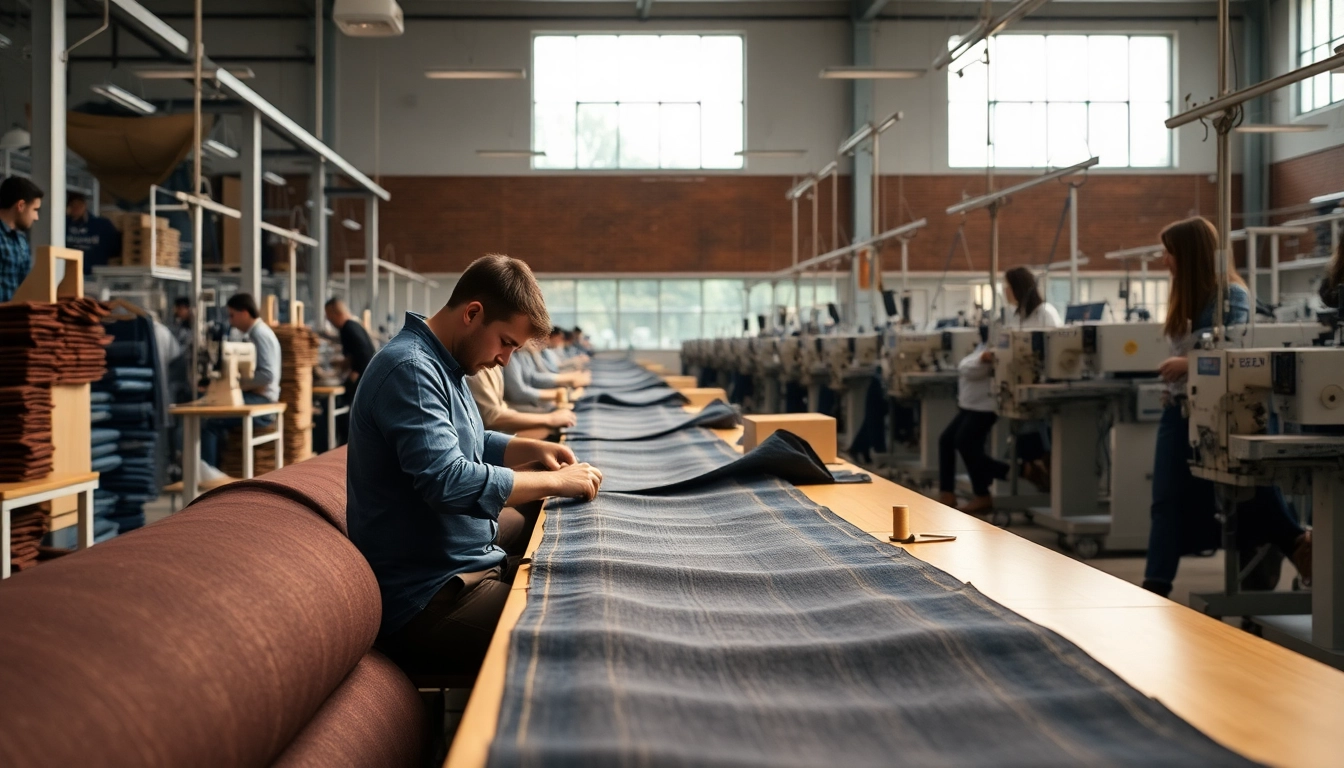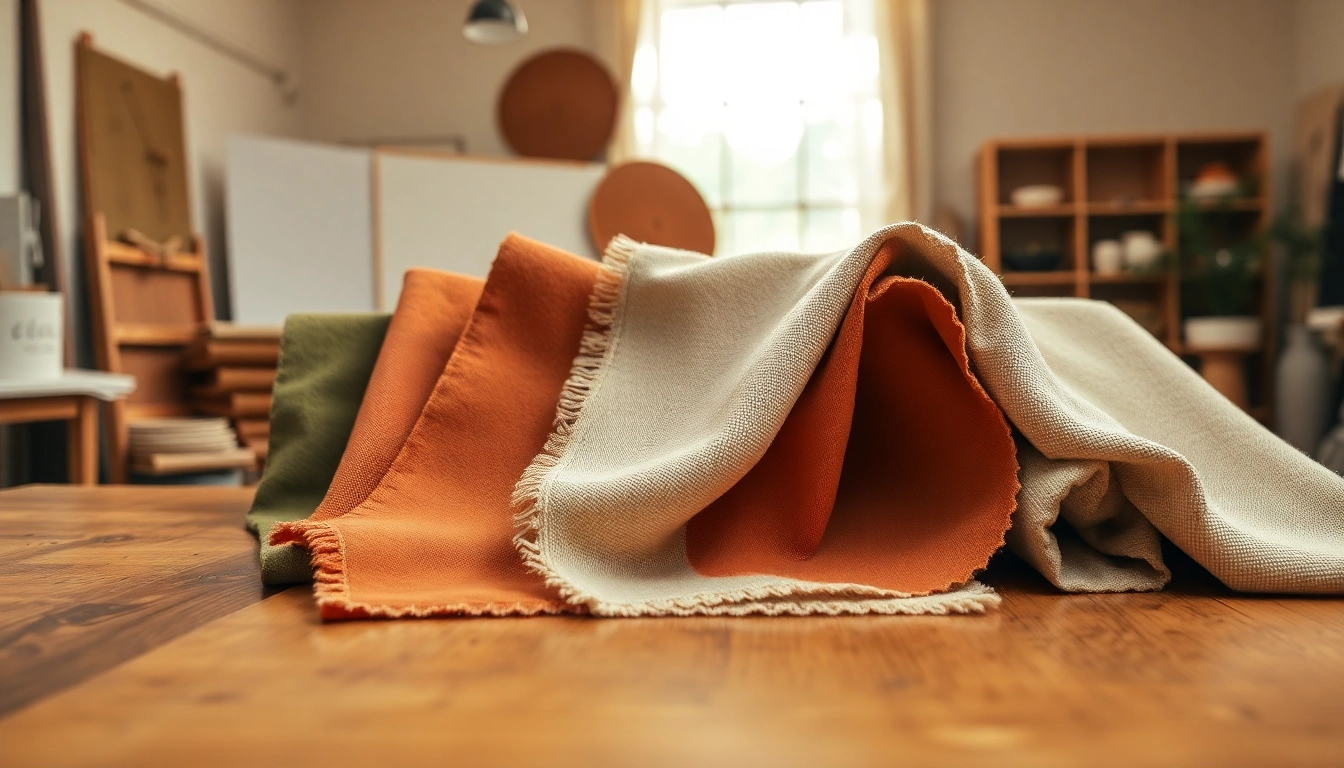The Role of Jeans Factory Manufacturers in Today’s Fashion Industry
The fashion industry, characterized by its dynamic trends and consumer demands, relies heavily on the foundational work of jeans factory manufacturers. As the backbone of denim production, these manufacturers not only influence the quality and style of jeans but also reflect evolving trends and consumer preferences. Over the years, the role of jeans factory manufacturers has transformed, adapting to the challenges posed by globalization, sustainability, and technology.
Understanding the Jeans Production Process
The production of jeans begins long before fabric is ever cut. Understanding the entire process—from raw material sourcing to final garment assembly—is vital for recognizing how various factors influence production quality and cost. The journey begins with sourcing cotton or synthetic fibers, which are then spun into yarn. This yarn is woven or knitted into denim fabric, which is dyed, treated, and finished to produce the desired look and feel.
Following fabric production, the cutting stage involves precise measurements to ensure fabric is cut in the correct shape for jeans. The sewing process involves multiple operations, including attaching labels, zippers, and decorative elements such as rivets or embroidery. Finally, the jeans undergo quality checks to ensure they meet industry standards before packaging and shipping to retailers.
Key Players in the Manufacturing Arena
Within the jeans manufacturing landscape, various players emerge, each with a distinctive role. At the center are fabric suppliers who provide the base materials necessary for production. These suppliers often have partnerships with farmers or textile mills, ensuring an uninterrupted supply of quality fabric.
Next are the manufacturers themselves, who manage the production plant, labor workforce, and supply chain logistics. They need to maintain high standards of quality and efficiency to keep up with fast-fashion demands. Finally, brands and designers play a crucial role by specifying design elements and marketing strategies that influence production runs.
Trends Influencing Jeans Manufacturing
Consumer preferences significantly influence manufacturing trends, particularly in an era of swift fashion shifts. One prominent trend is the demand for sustainable practices. Manufacturers are increasingly pressed to adopt eco-friendly materials and processes, including organic cotton, recycled polyester, and less water-intensive dyeing techniques.
Additionally, there’s a growing trend towards customization and personalization. Consumers are seeking unique denim pieces that reflect their individual style. This shift requires manufacturers to be agile, capable of adjusting production lines to accommodate personalized orders without sacrificing quality or speed.
Quality Factors Affecting Jeans Production
Quality is paramount in jeans production, influencing everything from consumer satisfaction to brand reputation. Multiple quality factors must be addressed throughout the stages of production to ensure a superior final product.
Material Selection for Premium Denim
Material selection is one of the most critical factors affecting the quality of jeans. High-quality denim is typically made from 100% cotton or blends that provide durability and comfort. Factors such as fiber length, dye choice, and weight significantly impact the fabric’s performance.
For premium denim, manufacturers often select long-staple cotton varieties that contribute to increased strength and softness. Whether opting for raw denim or pre-washed fabric, careful selection greatly influences the end product’s overall look, feel, and lifespan.
Production Techniques Ensuring Durability
Beyond material choice, the techniques utilized during production play a vital role in determining the durability of jeans. State-of-the-art weaving looms, stitching methods, and finishing processes can significantly enhance the quality of the final product.
For instance, leveraging techniques like double-stitched seams can add resilience to stress points, while enzyme washes can soften the fabric without compromising strength. Furthermore, the incorporation of innovative materials, like stretch fibers, offers improved flexibility without yielding to wear and tear.
Quality Control Measures in Factory Operations
To ensure that each pair of jeans meets quality expectations, effective quality control measures must be implemented throughout the production process. Inspection protocols typically involve both in-line checks during the manufacturing process as well as final inspections before shipping.
Common practices involve assessing stitching precision, fabric integrity, and overall construction quality. Some manufacturers employ advanced technologies such as automated inspection systems to enhance consistency and accuracy in quality assurance.
Global Landscape of Jeans Factory Manufacturers
The global jeans manufacturing landscape is diverse, with production capabilities spread across various regions. Different countries specialize in various aspects of denim production, influenced by factors such as cost, labor availability, and access to raw materials.
Major Manufacturing Hubs for Jeans
While the denim fabric is popular globally, certain regions have emerged as prominent manufacturing hubs. Countries like Bangladesh and Vietnam are known for their cost-effective labor and strong infrastructure, making them preferred locations for large-scale production.
In contrast, the USA houses manufacturers that prioritize quality and sustainability, often appealing to brands aiming for a more eco-conscious image. This geographical diversification allows brands to select manufacturers that align best with their business objectives.
Comparative Analysis of Local vs. Overseas Production
Brands often face the decision of whether to manufacture locally or overseas, each choice coming with distinct advantages and challenges. Local manufacturing facilitates quicker turnaround times, lower shipping costs, and streamlined communication with factories. However, it tends to be more expensive due to higher labor costs.
On the other hand, overseas production can significantly reduce costs, though it often involves extended lead times and potential communication barriers. Brands must weigh these considerations against their specific needs and target markets to make informed manufacturing decisions.
Regulatory Standards Impacting Manufacturing
Regulatory standards significantly influence jeans manufacturing on both local and international scales. Brands must adhere to garment licensing, quality certifications, and safety regulations to maintain compliance within their respective markets. This compliance is crucial not only for legal reasons but also for brand reputation, as consumers are increasingly scrutinizing the ethics of garment production.
Different countries impose varying standards, and manufacturers must keep abreast of these regulations to avoid penalties and ensure a sustainable operation.
Sustainability Practices among Jeans Factory Manufacturers
With growing concerns over environmental issues, sustainability has taken center stage within the jeans manufacturing industry. This shift reflects a broader commitment to social responsibility and environmental stewardship.
Eco-Friendly Materials & Processes
As part of sustainability practices, many manufacturers are switching to eco-friendly materials such as organic cotton, Tencel, and recycled fabrics. The sustainable sourcing of these materials reduces environmental impact and aligns with consumer demand for green products.
Additionally, sustainable production processes focus on reducing water usage and chemical inputs while maintaining high-quality outputs. Manufacturers are adopting new dyeing technologies that utilize less water and safer chemicals, further contributing to sustainability efforts.
Reducing Waste in Production Lines
Reducing waste throughout the manufacturing process is another vital component of sustainability. Many manufacturers are employing techniques like zero-waste patterns to minimize fabric scraps during the cutting process. Reusing these scraps in creative ways—such as in accessories or patchwork—can ensure that fewer materials end up in landfills.
Moreover, implementing more efficient production methods can decrease energy consumption and resource use, supporting the overarching goal of a circular fashion economy.
Certifications and Consumer Expectations
Certifications play an essential role in bolstering manufacturers’ claims regarding sustainability. Gaining certifications such as Global Organic Textile Standard (GOTS) or OEKO-TEX can enhance brand credibility, as consumers increasingly seek products that meet ethical and environmental standards.
Understanding and meeting these consumer expectations—whether through transparency, sustainable sourcing, or ethical treatment of workers—directly impacts a manufacturer’s reputation and marketability.
Future Trends for Jeans Factory Manufacturers
As the denim industry continues to evolve, staying abreast of future trends is crucial for manufacturers. Market demands are in constant flux, and anticipating these changes can provide significant competitive advantages.
Technological Innovations in Denim Production
Technological innovations are reshaping the face of jeans manufacturing, with advancements in automation and data-centric production methods leading the way. Technologies such as 3D knitting, laser cutting, and virtual sampling are streamlining processes, reducing waste, and accelerating time-to-market.
Furthermore, the integration of artificial intelligence can enhance inventory management and demand forecasting, allowing manufacturers to align production more closely with consumer behaviors and seasonal swings.
Adapting to Consumer Demands for Customization
The trend toward customization signifies a major shift in consumer expectations. Modern consumers desire personalized products that reflect their style, which requires manufacturers to adapt their processes to accommodate this demand.
This could involve implementing technologies that allow for on-demand production or utilizing size and fit data to produce jeans tailored to individual body types, thereby reducing returns and enhancing customer satisfaction.
Challenges Ahead for the Jeans Manufacturing Sector
Despite the opportunities for growth, the jeans manufacturing sector faces several challenges moving forward. Navigating the complexities of supply chain disruptions, fluctuating raw material costs, and evolving labor regulations requires nimbleness and foresight.
Additionally, competition among manufacturers will intensify, prompting brands to seek unique selling propositions while maintaining quality and reducing costs. Successful manufacturers will focus on innovation, sustainability, and transparency to differentiate themselves in an increasingly crowded marketplace.




